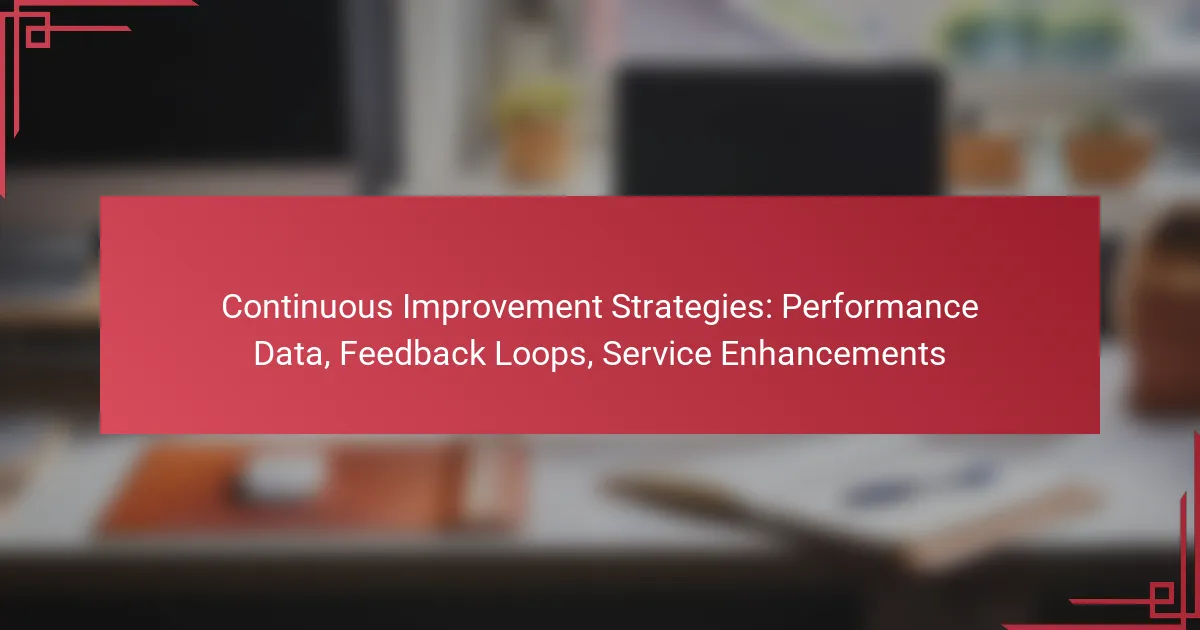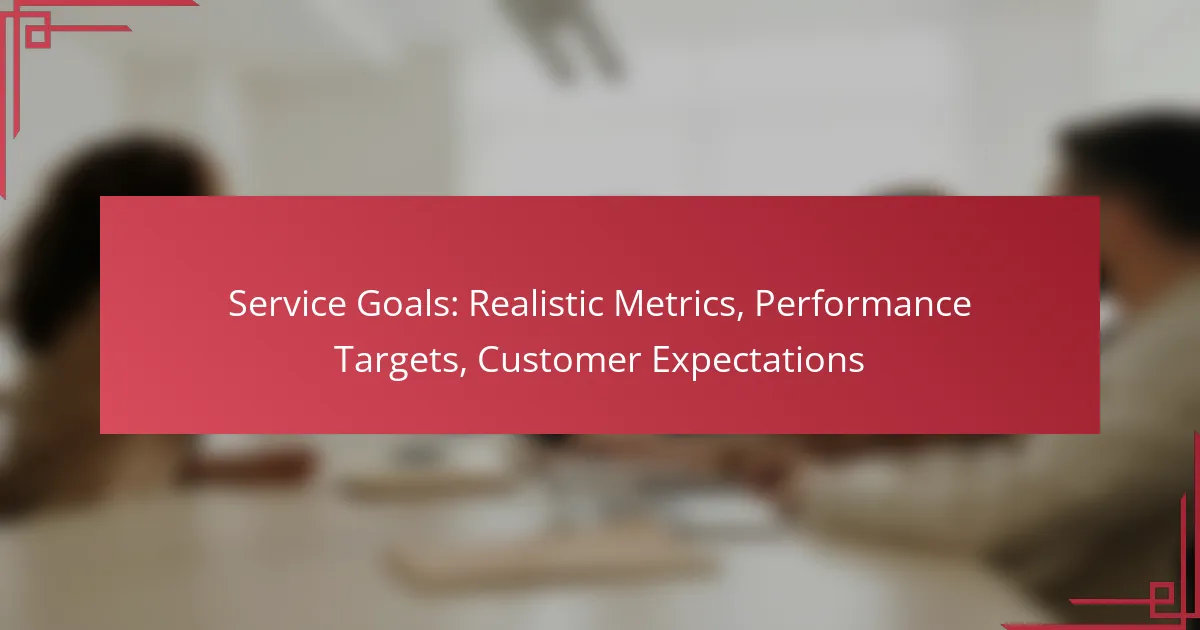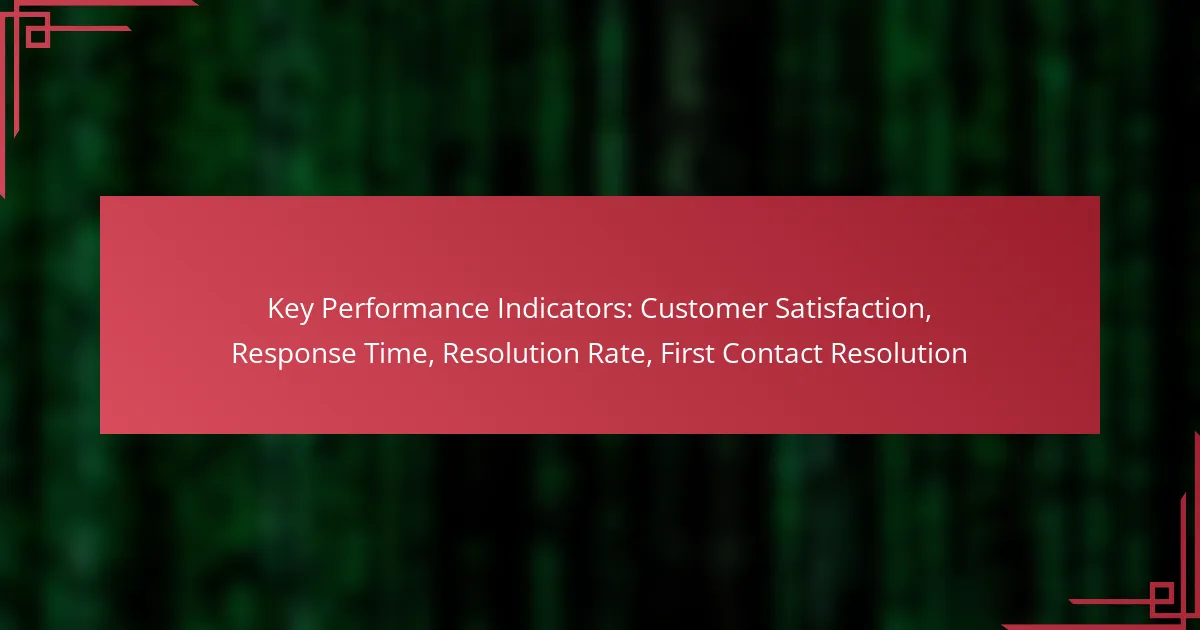Continuous improvement strategies are vital for organizations aiming to enhance performance and service delivery. By leveraging performance data and establishing feedback loops, businesses can systematically identify areas for enhancement and implement targeted service improvements. This approach not only boosts operational efficiency but also elevates customer satisfaction through informed decision-making and responsive adaptations.

What are effective continuous improvement strategies in the UK?
Effective continuous improvement strategies in the UK focus on enhancing performance through systematic evaluation and adaptation. Key approaches include utilizing performance data, integrating feedback loops, and implementing service enhancements to drive ongoing development.
Data-driven decision making
Data-driven decision making involves using quantitative and qualitative data to inform business choices. This approach helps organizations identify trends, measure performance, and assess the impact of changes. In the UK, companies often rely on key performance indicators (KPIs) to guide their strategies.
To implement this strategy, collect relevant data regularly and analyze it to uncover insights. Tools like dashboards can visualize performance metrics, making it easier to spot areas for improvement. Avoid relying solely on anecdotal evidence, as this can lead to biased decisions.
Employee feedback integration
Integrating employee feedback is crucial for fostering a culture of continuous improvement. Engaging staff in the decision-making process can lead to valuable insights and increased morale. Regular surveys and suggestion boxes are effective methods for gathering input from employees in the UK.
When collecting feedback, ensure that the process is anonymous to encourage honesty. Act on the feedback received to demonstrate that employee opinions are valued. Regularly communicate changes made based on feedback to reinforce a culture of openness and responsiveness.
Customer experience enhancements
Enhancing customer experience is vital for maintaining competitiveness and loyalty. Continuous improvement strategies should focus on understanding customer needs and preferences through surveys, interviews, and feedback forms. In the UK, businesses often use Net Promoter Scores (NPS) to gauge customer satisfaction.
To improve customer experience, analyze feedback to identify common pain points and areas for enhancement. Implement changes based on this analysis, such as streamlining service processes or improving product offerings. Regularly review customer feedback to ensure ongoing alignment with expectations.
Agile methodologies
Agile methodologies promote flexibility and responsiveness in project management and product development. This approach allows teams to adapt quickly to changes and continuously improve processes. In the UK, many organizations adopt Agile frameworks like Scrum or Kanban to enhance efficiency.
To implement Agile methodologies, encourage cross-functional collaboration and iterative development. Regularly hold sprint reviews and retrospectives to assess progress and identify areas for improvement. This iterative approach helps teams stay aligned with business goals while fostering a culture of continuous enhancement.
Benchmarking against industry standards
Benchmarking against industry standards allows organizations to compare their performance with competitors and identify best practices. This process helps businesses in the UK understand where they stand and what improvements are necessary to remain competitive.
To effectively benchmark, select relevant metrics and identify industry leaders for comparison. Analyze the gaps between your performance and that of top competitors, then develop strategies to close those gaps. Regular benchmarking can help ensure that continuous improvement efforts remain aligned with industry trends and standards.

How can performance data drive improvements?
Performance data can significantly enhance service delivery by identifying strengths and weaknesses in operations. By analyzing this data, organizations can implement targeted strategies that lead to measurable improvements in efficiency and customer satisfaction.
Key performance indicators (KPIs)
Key performance indicators (KPIs) are essential metrics that help organizations gauge their performance against strategic goals. Selecting the right KPIs involves focusing on measurable outcomes that align with business objectives, such as customer satisfaction scores, response times, or sales growth.
Common KPIs include Net Promoter Score (NPS), Customer Satisfaction Score (CSAT), and First Response Time (FRT). Regularly reviewing these indicators allows teams to adapt strategies quickly and effectively, ensuring continuous improvement.
Real-time analytics tools
Real-time analytics tools provide immediate insights into performance data, enabling organizations to make swift decisions. These tools can track metrics such as website traffic, sales conversions, and customer interactions, allowing for prompt adjustments to strategies.
Popular tools like Google Analytics and Tableau facilitate real-time monitoring, helping teams identify trends and anomalies as they occur. Implementing these tools can lead to faster response times and improved service delivery.
Data visualization platforms
Data visualization platforms transform complex performance data into easily digestible visual formats, such as charts and graphs. This clarity helps stakeholders quickly understand trends and make informed decisions based on the data presented.
Tools like Power BI and Looker are effective for creating dashboards that highlight key metrics and performance trends. Utilizing these platforms can enhance communication across teams and foster a culture of data-driven decision-making.

What role do feedback loops play in service enhancement?
Feedback loops are essential for service enhancement as they facilitate continuous improvement by integrating customer and internal team insights into operational processes. By systematically collecting and analyzing feedback, organizations can identify areas for improvement and implement changes that enhance service quality and customer satisfaction.
Continuous customer feedback collection
Collecting continuous customer feedback is crucial for understanding user experiences and expectations. This can be achieved through various methods such as surveys, interviews, and online reviews. Utilizing tools like Net Promoter Score (NPS) or Customer Satisfaction Score (CSAT) can help quantify customer sentiments and track changes over time.
To effectively gather feedback, consider deploying short surveys after service interactions or using feedback forms on your website. Aim for a response rate of at least 10-20% to ensure that the data collected is representative of your customer base.
Internal team feedback mechanisms
Internal feedback mechanisms are vital for fostering a culture of continuous improvement within teams. Regular check-ins, team meetings, and anonymous suggestion boxes can encourage team members to share insights on processes and service delivery. This internal dialogue helps identify inefficiencies and areas where service can be enhanced.
Implementing structured feedback sessions, such as retrospectives or post-mortems, can provide a platform for team members to discuss what worked well and what didn’t. Aim to hold these sessions regularly, such as bi-weekly or monthly, to maintain momentum and address issues promptly.
Feedback analysis for actionable insights
Analyzing feedback is essential for transforming raw data into actionable insights. Use qualitative and quantitative methods to identify trends and patterns that can inform service enhancements. Tools like sentiment analysis can help in understanding customer emotions, while statistical analysis can reveal significant correlations between feedback and service performance.
To ensure that insights lead to tangible improvements, prioritize feedback based on impact and feasibility. Create a simple matrix to categorize feedback into high, medium, and low priority, allowing teams to focus on changes that will yield the greatest benefit. Regularly review and update action plans based on new feedback to keep the service enhancement process dynamic and responsive.
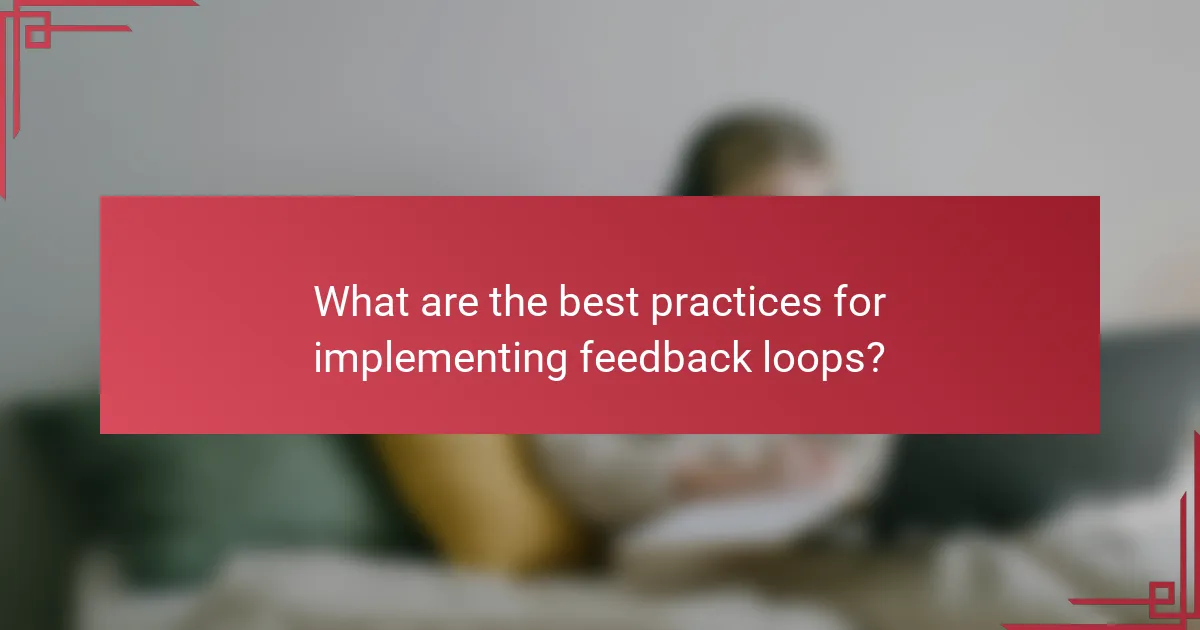
What are the best practices for implementing feedback loops?
Effective feedback loops are essential for continuous improvement, enabling organizations to gather insights and make informed adjustments. Best practices include establishing regular feedback sessions, utilizing survey tools, and incorporating feedback into training programs.
Regular feedback sessions
Regular feedback sessions create a structured environment for open communication. These meetings should occur at consistent intervals, such as weekly or monthly, to ensure ongoing dialogue between team members and management.
During these sessions, focus on specific performance metrics and areas for improvement. Encourage participants to share their thoughts candidly, fostering a culture of trust and collaboration.
Utilizing survey tools like SurveyMonkey
Survey tools like SurveyMonkey facilitate the collection of feedback from a broader audience. These platforms allow organizations to design customized surveys that can gauge employee satisfaction, service quality, or customer experience.
When creating surveys, keep questions clear and concise, and consider using a mix of rating scales and open-ended questions. Aim for a completion time of under 5 minutes to maximize response rates.
Incorporating feedback into training programs
Integrating feedback into training programs ensures that lessons learned are applied to future performance. Analyze feedback from sessions and surveys to identify common themes or skill gaps that need addressing.
Design training modules that specifically target these areas, using real-world examples from feedback to enhance relevance. Regularly update training content based on ongoing feedback to keep it aligned with current needs and challenges.
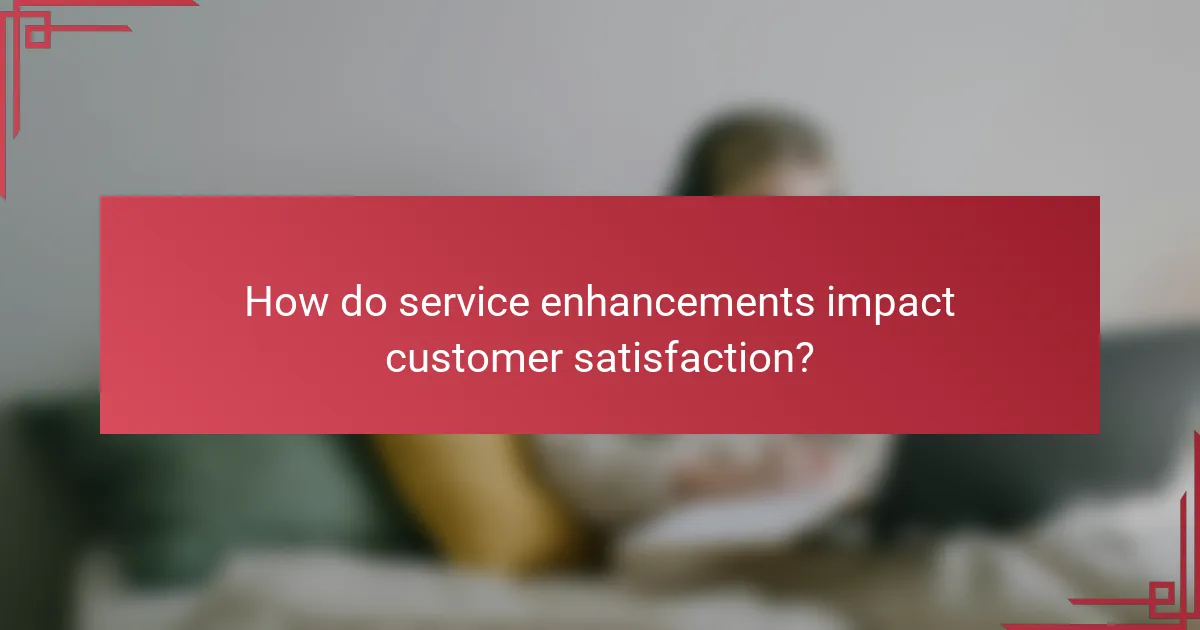
How do service enhancements impact customer satisfaction?
Service enhancements significantly boost customer satisfaction by improving the overall experience. When businesses focus on refining their services, they can meet and exceed customer expectations, leading to positive feedback and loyalty.
Improved service delivery times
Faster service delivery times directly contribute to higher customer satisfaction. Customers appreciate prompt responses and timely service, which can lead to a more favorable perception of the brand. For instance, reducing delivery times from several days to just a few hours can enhance customer experiences significantly.
To achieve improved delivery times, businesses should analyze their current processes and identify bottlenecks. Implementing technology solutions, such as automated order processing systems, can streamline operations and reduce delays.
Higher customer retention rates
Service enhancements often lead to higher customer retention rates, as satisfied customers are more likely to return. When customers feel valued through improved services, they are less inclined to switch to competitors. For example, offering personalized service can create a stronger bond with customers, encouraging them to remain loyal.
To maintain high retention rates, businesses should regularly solicit feedback and make adjustments based on customer preferences. Implementing loyalty programs can also incentivize repeat business and foster long-term relationships.
Increased customer loyalty
Enhancing services can significantly increase customer loyalty, as customers tend to stick with brands that consistently meet their needs. When customers experience reliable and high-quality service, they are more likely to recommend the brand to others, further expanding its reach.
To cultivate loyalty, businesses should focus on building trust through transparency and consistent communication. Regularly updating customers about service improvements and actively engaging with them can reinforce their commitment to the brand.

What frameworks support continuous improvement initiatives?
Continuous improvement initiatives are often supported by frameworks such as Lean, Six Sigma, and Agile. These methodologies focus on enhancing efficiency, reducing waste, and fostering a culture of ongoing enhancement within organizations.
Lean
Lean focuses on maximizing value by minimizing waste. It involves identifying and eliminating non-value-adding activities, which can lead to significant cost savings and improved service delivery. Organizations using Lean often implement value stream mapping to visualize processes and pinpoint areas for improvement.
Key principles of Lean include continuous flow, pull systems, and empowering employees to contribute to improvements. For example, a manufacturing company might streamline its production line by reorganizing workstations based on the flow of materials, reducing cycle times and increasing output.
Six Sigma
Six Sigma aims to improve quality by identifying and removing the causes of defects and minimizing variability in processes. This data-driven approach uses statistical methods to analyze performance data and implement changes. Organizations often adopt the DMAIC (Define, Measure, Analyze, Improve, Control) framework to guide their improvement efforts.
For instance, a service provider might use Six Sigma to analyze customer feedback and identify patterns in service failures. By addressing these root causes, the provider can enhance customer satisfaction and loyalty over time.
Agile
Agile is a framework primarily used in software development that emphasizes flexibility, collaboration, and customer feedback. It promotes iterative progress through short cycles called sprints, allowing teams to adapt quickly to changing requirements and improve products continuously.
In practice, an Agile team might release a minimum viable product (MVP) to gather user feedback and make rapid adjustments. This approach not only accelerates development but also ensures that the final product aligns closely with customer needs.
